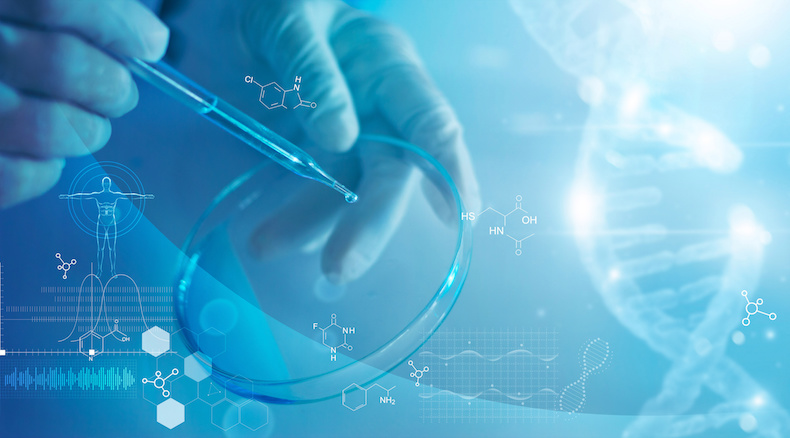The ‘road map’ for safety assessment of Live Biotherapeutic Products (LBPs) sets out recommendations to tackle regulatory and technical challenges when evaluating safety, including discussing the importance of the risk analysis in LBP development, risk documentation and safety assessments.
“As developers have struggled when designing their LBP pre-clinical programmes, the industry can benefit from this very practical road map,” says Dr Magali Cordaillat-Simmons, corresponding author on the paper and executive director of the Pharmabiotic Research Institute (PRI), a European expertise group supporting microbiome-drug development.
“This road map takes into account the new concepts of ‘quality’ and ‘development-by-design’, usually applied to other biological medicinal products.”
The recommendations, published in Frontiers in Medicine, come after PRI hosted multiple meetings that brought together groups of independent academics and industry, including University Clermont Auvergne, Biofortis Mérieux NutriSciences, Biose, ADM Protexin, Probiotical, University of Novi Sad, Johnson & Johnson, Lallemand, NIZO, LNC Therapeutics, Chr. Hansen, Caelus Health, Vrije Universiteit Brussel and Yakult Europe.
The experts noted that while pharmaceutical guidelines for other biological products can be considered to design the relevant clinical development programmes, guidelines and best practices for the safety assessment for LBPs is scattered and diverse.
As such, the expert group publication provides a clear attempt to establish best-practises for the risk assessment for LBPs and to propose suitable solutions for non-clinical programmes and ‘first in human’ clinical safety trials.
Commenting on the publication, Professor Bruno Pot, Science Director for Yakult Europe and President of the PRI said the publication responds to ‘a real need in the field’: “Product developers, medical doctors, pharmacists, and patients might all benefit from clear procedures for the development of LBPs.”
“The article could also help in the development of future regulatory pathways that will guarantee safety of LBPs for vulnerable populations, possibly helping groups of patients with high unmet medical needs.”
The Live Biotherapeutic Products challenge
The publication notes that according to Directive 2001/83/EC, in the European Union (EU), any product intended to prevent or treat disease is defined as a medicinal product and requires a market authorisation by competent authorities prior to commercialisation.
However, even if the pharmaceutical regulatory framework is harmonized at the EU level, the team claim that obtaining market authorisation for Live Biotherapeutic Products (LBPs) remains ‘challenging’ because the specific characteristics and mode of action of LBPs represents a real challenge for safety assessments when compared to other medicinal products.
“LBPs are not intended to reach the systemic circulation targeting distant organs, tissues, or receptors, but rather exert their effect through direct interactions with the complex native microbiota and/or the modulation of complex host-microbiota relation, indirectly leading to distant biological effects within the host,” the team noted.
“Hence, developers must rely on a thorough risk analysis, and pharmaceutical guidelines for other biological products should be taken into account in order to design relevant non-clinical and clinical development programmes.”
Actionable recommendations
The roadmap states that in the absence of EU guidelines for the development of LBPs, developers are advised to discuss the process with regulatory authorities, “especially as this field is rather new.”
It states that within the EU, this can be done through the Scientific Advice Procedure – adding that this process should include proposals for the most suitable studies guaranteeing sufficient quality and (pre)clinical safety, and should also help in developing protocols to demonstrate efficacy.
“These products represent a real challenge, because their MOA does not rely on their absorption in the systemic circulation nor on a simple direct liaison between a ligand and a receptor, but is rather related to an impact on the local ecosystem and the local host cells, involving various direct and indirect mechanisms.”
Because of this, they suggest that some existing CHMP and ICH guidelines developed for other types of biologicals could provide important information when designing non-clinical and clinical developments for LBPs.
The full roadmap also outlines examples of alternative methods and models which could be more appropriate for the documentation and development of this live biotherapeutics.
“As new products are being developed, we hope that this review will improve the understanding by all stakeholders, including government and regulatory agencies, and advance the regulatory harmonization, resulting in the development of dedicated and specific guidelines and recommendations for LBP-specific drug and microbiome-based medicinal product development programmes,” concluded the team.
“This will increase consistency in LBP development and encourage investment/funding for developers, offering new and promising microbiome-based therapeutics for various diseases and many patients in the future.”
Sign up for free Industry Newsletter









